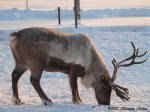Time ball? What on earth is a time ball???
Time balls aren't very widely known these days because they are basically obsolete. Once, however, they were an integral part of the seafaring community. Time balls were the means by which sailors could check their marine chronometers to assure that their clock maintained an accurate measure of time.
Basically, a time ball was a large painted wooden or metal ball that was originally positioned in a highly visible locale, and was dropped at a predetermined time. In this sense, it acted as a sort of visible alarm clock. Sailors could set their chronometers against this timed drop which was quite important as accurate time keeping was one way that sailors could accurately measure longitude whilst at sea.
Time ball stations set their clocks based on observations of the positions of the sun and stars. The time ball therefore was initially located at an observatory although at the introduction of the electric telegraph (around the 1850s) the time ball could be moved to a separate location and operated based on instruction from a remote observatory.
Time balls are usually dropped at 1pm. The time ball was not usually dropped at noon as the observatories would be too busy taking readings at this time.
Generally, a time ball would be raised half way about 5 minutes before the drop to alert the ships, then with 2–3 minutes to go they were raised the whole way. The time was recorded when the ball began descending, not when it reached the bottom.
With the commencement of radio time signals (in Britain from 1924), time balls gradually became obsolete and replaced by radio which had the distinct advantage that the ship didn't have to remain within sight of the time ball during the drop. Many time ball stations were therefore demolished in the 1920s.
- References:
- Wikipedia
- Deal Timeball Tower


